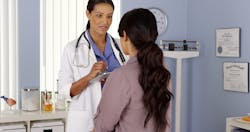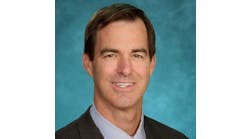Survey: Primary Care Practices Endangered By Steep Declines in Revenue, Staff
In a survey of primary care clinicians conducted April 10-13, fewer than half of respondents said they had enough patient volume to stay open for the next four weeks (46 percent) or enough cash on-hand to stay open for the next four weeks (47 percent).
This is the fifth consecutive week that the Larry A. Green Center at Virginia Commonwealth University has conducted the survey in partnership with the Primary Care Collaborative (PCC).
This week’s survey results reflect input from over 2,600 primary care physicians, nurse practitioners, and PAs. Responses covered all 50 states. Respondents’ specialties range among family medicine (69 percent), pediatrics (5 percent), internal medicine (12 percent), geriatrics (7 percent), urgent care (3 percent) and other (4 percent). Practice settings include 70 percent larger than 3 clinicians, 33 percent rural, and 28 percent community health centers. One-third have more than 50 percent of patients on Medicaid; 14 percent own their practice; 13 percent are part of academic centers. 21 percent is majority fee-for-service practices; 12 percent majority capitated; 20 percent had no capitation.
The survey suggests that many primary care practices are at serious risk of shuttering. Forty-two percent report concerns about layoffs and furloughed staff, and an overwhelming majority (85 percent) have seen dramatic decreases in patient volume.
The survey found that testing continues to be limited, and personal protective equipment is hard to find. The survey also shows disproportionate COVID-19-related health burdens among specific groups, including low-income workers and racial minorities and those with pre-existing co-morbidities or mental health concerns.
And the majority of respondents are uncertain that they will receive payments for virtual care: Asked if they are “likely to receive payment for video and e-based care, 10 percent said no, and 43 percent said they were unsure. Asked if they were likely to receive payment for their telephone-based care, 16 percent said no and 44 percent were unsure.
“Opening up the country and getting the economy going again will be difficult or impossible if there is not enough testing and PPE and many primary care practices are closed for business,” said Rebecca Etz, Ph.D., co-director of the Green Center and associate professor of Family Medicine and Population Health at Virginia Commonwealth, in a statement. “We’re seeing so much economic pain among patients and practices. When primary care is endangered, patients and the whole health system are endangered.”
“Congress must take rapid and decisive action with the fourth stimulus bill to make sure that the U.S.’s primary care practices remain viable, including investing in a Medicare and Medicaid per patient monthly payment for the balance of 2020,“ said Ann Greiner, president and CEO of the Primary Care Collaborative, in a statement. “Independent, rural and safety-net clinicians taking care of the country’s most vulnerable patients must be prioritized."


